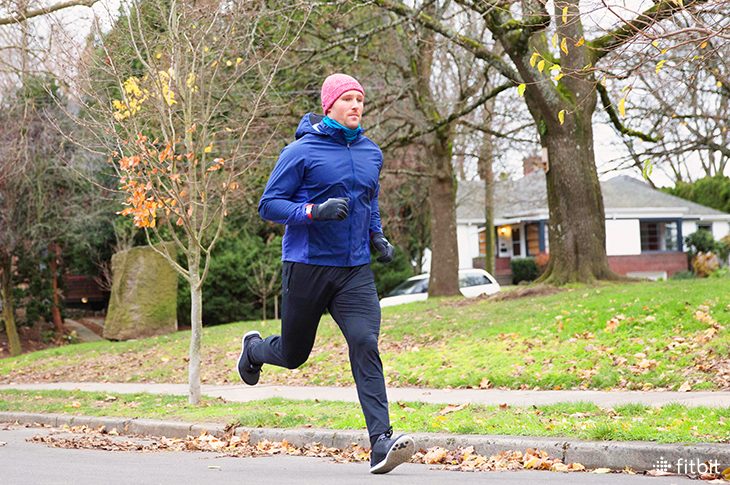Getting Older Affects Your Max Heart Rate (But That’s OK!)
By Jonathan Beverly
The other day I went for a run with my son. We’re good training partners: If we raced a 5K today we’d finish within less than a minute of each other. I know that won’t be the case for long, but these days, when we head out on an easy run, our effort level is roughly the same for the same pace.
At that easy pace, however, his Fitbit tracker shows his heart rate hovering around 175 beats per minute, while mine stays in the low 130s. Even if I started sprinting all out up a hill I wouldn’t be able to raise my heart rate to the beats per minute that he hits as soon as he starts working hard. Lately, I max out in the high 160s.
Am I just in better shape than he is? Nope. It’s more likely due to the fact that I’m 52 years old and he’s 15.
How Age and Exercise Affect Your Max Heart Rate
The relationship between the heart and exercise has been studied for more than six decades and the research is clear:
Max heart rate—the highest heart rate you can safely hit during exercise—decreases with age regardless of lifestyle or level of fitness.
Why the drop? The reasons aren’t completely known, but a
2013 University of Colorado Medical School study found that one reason could be slower electrical activity in the heart’s pacemaker cells. Basically, “your heart can’t beat as often,” says Roy Benson, running coach and co-author of
Heart Rate Training.
However, a lower max heart rate may not necessarily affect your splits. “It’s not a foregone conclusion that a decrease in heart rate max means a decline in performance,” says Joe Friel, coach and author of
Fast After 50 and
The Triathlete’s Training Bible. “That’s a very common but unsupported view of athletes who are ill informed about the science behind heart rate. They assume a high heart rate means a high level of performance. Not true.”
Your Target Heart Rate is What Matters
One way you can compensate for a slower heart rate is to get and stay fit. The
Centers for Disease Control and Prevention recommend that adults get 150 minutes of moderate-intensity cardio a week or 75 minutes of vigorous-intensity aerobic activity a week.
“When you go into serious training, you stretch the cardiac muscles,” says Benson. “That’s how you improve stroke volume.” And, according to the
American Heart Association, when your stroke volume is higher—meaning your body can pump more blood with each heartbeat—the heart doesn’t have to beat as many times to deliver the same amount of blood to your muscles.
So how can you try to exercise at the right intensity? If you own a
Fitbit Alta HR,
Charge 2,
Blaze, or
Surge and have your birthday logged in your profile, your tracker can help. Here’s how it works: Using the common formula of 220 minus your age, Fitbit will
calculate your maximum heart rate and then create three
target heart rate zones—fat burn (50 to 69 percent of your max heart rate), cardio (70 to 84 percent of your max hr), and peak (85 to 100 percent of your max heart rate)—based off that number. After exercising, you can click on the workout summary within your exercise tile to see how many minutes you logged in each zone.
These zones explain why my son and I can run together—at different heart rates—and feel like we’re expending the same amount of effort.
For instance, at age 15, my son’s max heart rate is 205 and his cardio heart rate zone is 144 to 172
At age 52, my max heart rate is 168 and my cardio heart rate zone is 118 to 144.
When we run in our cardio zones our heart rates can be up to 54 beats apart at any given time yet the moderate-intensity effort feels the same.
If you’re like me and regularly run with people of different ages, keep this in mind: Your heart rate during exercise is unique to you and only tells you how hard you’re working, not how fit you are. “There is absolutely no reason to compare heart rates between two people,” says Friel. “Doing so tells us nothing about either person as far as fitness or performance is concerned. It’s like comparing shoes sizes to determine how fit someone is. There is little in the way of an absolute and direct relationship between the two.”


 It's like I'm cummin', I'm cummin'. Then you're gone, with a smile.
It's like I'm cummin', I'm cummin'. Then you're gone, with a smile.